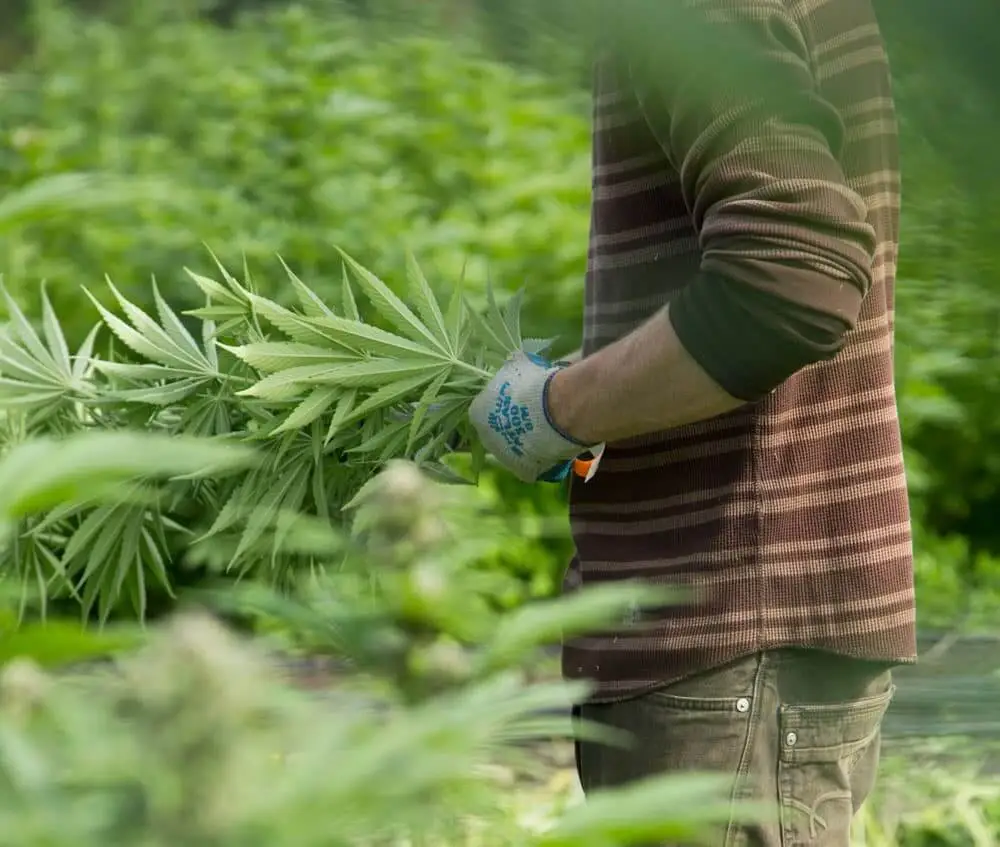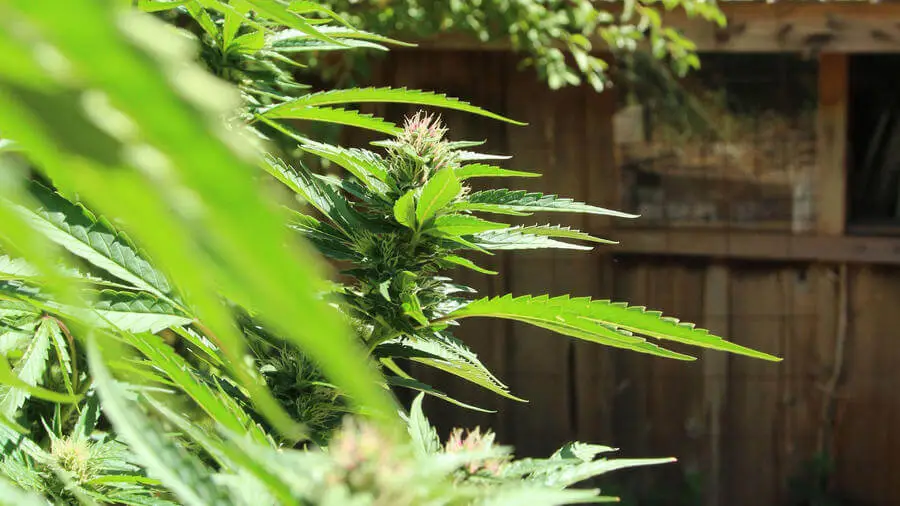Table of Contents
ToggleHow to Grow Marijuana for Beginners: A Step-By-Step Guide
Now that marijuana is legal for recreational or medical use in many states, many people have started wondering how to grow marijuana. Cannabis cultivation laws differ from state to state, and many states have now legalized home cultivation for medical or recreational use. For those who use marijuana for medical purposes, at-home marijuana cultivation can save you time and money.
But there will be many questions, such as: How long does it take to grow weed outside? Where does marijuana grow best? What is the best soil for outdoor marijuana plants?
Here’s what you need to know about growing your own weed at home and some growing tips—let this serve as your beginner’s guide to growing marijuana.

Where is it Legal to Grow Marijuana?
Before you start growing marijuana outdoors or even in your own home, you need to be aware of your state’s cultivation laws. Not every state allows marijuana cultivation, and some states have very harsh punishments if you are caught growing it at home. Right now, 18 states have approved home growing for marijuana, and Washington, D.C. Many other states have approved medical marijuana sales but prohibit at-home growth.
Even in states that allow marijuana cultivation, there are limits on how much marijuana you can grow or possess at one time. For example, Alaska and Colorado limit you to growing six plants at home. Before you start growing your own marijuana, make sure you know the regulations in your area.
Indoor vs. Outdoor Marijuana Growing
When growing at home, you’ll need to decide if you want to grow your marijuana indoors or outdoors. Both approaches have advantages and disadvantages, so you’ll need to determine which option best suits your circumstances.
How to Grow Marijuana Outdoors
While indoor grow setups give you more control over your plants, they can also be expensive. If cost concerns you, you may want to learn how to grow a weed plant outdoors instead. Here are some key outdoor weed-growing tips. Here’s a simple step-by-step process to get you started:
- Choose the Right Strain
Select a strain that is well-suited to your climate. Some strains thrive in cooler temperatures, while others need more warmth and sunlight. Research strains to find one that matches your local weather patterns. - Understand the Law
Before you start, make sure you’re fully aware of the local laws regarding cannabis cultivation in your area. The legal status of growing marijuana varies widely, and you’ll want to ensure you’re compliant. - Select a Good Location
Choose a spot that receives ample sunlight—at least six hours of direct sunlight per day. The location should also offer some protection from strong winds and have good drainage to prevent waterlogged roots. - Prepare the Soil
Cannabis plants thrive in rich, well-draining soil. Test your soil’s pH, which should be between 6.0 and 7.0 for optimal growth. Amend your soil with organic matter, like compost, to improve fertility and drainage. - Germinate Your Seeds
Start by germinating your marijuana seeds. You can do this by placing them between damp paper towels or planting them directly into small pots with starter soil. Keep them warm and moist until they sprout. - Transplant Carefully
Once your seedlings have developed their first set of true leaves, and the threat of frost has passed, you can transplant them outdoors. Be gentle to avoid damaging the roots. Space plants at least 5 feet apart to allow growth. - Water Wisely
Marijuana plants need consistent moisture, especially during the vegetative stage. Water your plants in the early morning or late afternoon to avoid evaporation and ensure deep soil penetration. However, avoid overwatering, as this can lead to root rot. - Nutrient Management
Feed your plants cannabis-specific nutrients following the manufacturer’s instructions. Start with a higher nitrogen mix during the vegetative stage and switch to a phosphorus-rich formula during the flowering stage. - Pest and Disease Control
Check plants regularly for signs of pests or disease. Use organic pesticides and fungicides to manage any issues, applying them in the recommended manner to avoid harming the plant or the environment. - Harvest at the Right Time
Timing is crucial for harvesting. Look for the trichomes on the buds to turn from clear to a milky white or amber color. This change indicates peak THC levels. Harvest your plants by cutting the buds and drying them in a controlled environment. - Curing
After drying, cure your buds by placing them in airtight containers, like mason jars, and storing them in a cool, dark place. Open the jars daily for a few minutes to exchange air and check for mold. Proper curing can take a few weeks but enhances potency and flavor.
How Long Does it Take to Grow Weed Outside?
The time it takes to grow weed outdoors can vary significantly depending on the strain, local climate, and specific growing conditions, but generally, it ranges from about 3 to 8 months from seed to harvest. Autoflowering strains can offer a quicker turnaround, often ready to harvest in as little as 2 to 3 months, making them a popular choice for growers looking for speed.
Photoperiod strains, which flower based on the amount of light they receive, usually take longer, with the planting often occurring in the spring and harvest in the late summer to fall. Factors such as sunlight, temperature, and the grower’s ability to manage pests and diseases can also affect the overall growth cycle, making it crucial for growers to understand their environment and choose their strains accordingly to ensure the best possible outcome.
How to Grow Marijuana Indoors
For most people, the first step in growing is learning how to grow a marijuana plant indoors. Although it’s a more complex process than growing marijuana outdoors, it also gives you more control over the final product. You can control your entire growing environment to make sure you get the high-quality plants you need, and you’ll also have more privacy. Here’s a step-by-step process for you to check out:
- Select the Right Strain
Choose a strain suitable for indoor growing. Indica strains are often preferred for their shorter growth cycle and compact size, but sativa and hybrid strains can also be successfully grown with proper care. - Set Up Your Grow Space
Designate a specific area for your grow operation, such as a tent, closet, or room. Ensure it’s clean, light-tight, and has ample space for your plants to grow. Consider the height of your plants and the space needed for your lighting system. - Choose Your Lights
Select an appropriate lighting system—LED, HID (High-Intensity Discharge), or CFL (Compact Fluorescent Light) are popular choices. LED lights are energy-efficient and produce less heat, making them ideal for small spaces. - Prepare Your Soil or Hydroponic System
Decide whether to grow in soil or a hydroponic system. Soil is more forgiving and easier for beginners, while hydroponics can lead to faster growth and higher yields but requires more precise management. - Germinate Your Seeds
Soak your seeds in water for 24-48 hours until they sprout, then plant them in small pots with starter soil or a hydroponic medium. Keep them under 18-24 hours of light to encourage germination. - Monitor Temperature and Humidity
Keep your growth space at a temperature between 68°F and 77°F with a relative humidity of 40-60% during the vegetative stage, adjusting as needed for the flowering stage. - Water and Feed Your Plants
Water your plants when the top inch of soil feels dry, avoiding overwatering. Feed them with a balanced nutrient solution tailored for cannabis, following the nutrient schedule recommended by the manufacturer. - Prune and Train Your Plants
Use techniques like topping, low-stress training (LST), or Screen of Green (SCROG) to control plant height and promote bushier growth for better yields. - Switch to the Flowering Stage
After your plants have grown for several weeks, change the light cycle to 12 hours of light and 12 hours of darkness to induce flowering. Adjust your nutrient mix to one higher in phosphorus to support bud development. - Harvest, Dry, and Cure Your Buds
Harvest your plants when the trichomes on the buds turn milky white or amber. Dry the buds in a controlled environment, then cure them in airtight containers to enhance flavor and potency.

Where Does Marijuana Grow Best?
Marijuana can flourish both indoors and outdoors, but the optimal growing environment depends on several factors, including climate, control, and the grower’s specific goals. Indoors, growers have complete control over the environment, allowing them to manipulate lighting, temperature, and humidity to achieve consistent, year-round yields and potentially higher potency. This control can lead to higher-quality cannabis because the grower can optimize conditions at every stage of growth. However, indoor growing requires a significant investment in equipment and resources.
Outdoors, marijuana plants can grow larger and yield more due to the natural sunlight and greater space. This method relies heavily on the climate and season, with regions near the equator or those with a Mediterranean climate being ideal due to their long, sunny days and consistent conditions. Outdoor growing is generally less expensive and more environmentally sustainable but comes with risks such as pests, weather changes, and potential legal visibility.
What is the Best Soil for Outdoor Marijuana Plants?
Some soil types are better for growing cannabis than others. Loam is a blend of clay, silt, and sand soils and is generally considered to be the best soil for marijuana. This is because it combines the positive qualities of all three soil types. However, silt soils also work well for growing most strains of marijuana. You’ll also want to make sure you’re adding organic fertilizers to your soil. There are many organic fertilizer brands on the market that have been designed specifically for cannabis products.
What is the Best Strain to Start Growing?
There are many cannabis strains that are appropriate for beginner growers. Blue Dream is arguably the best strain to grow indoors for beginners because it is resistant to many forms of mildew and rot. It’s also quite potent and popular among medical users. Other popular strains to grow at home include Northern Lights, White Widow, and GMO Cookies. The best strains for growing outdoors for beginners include LSD, Durban Poison, and Special Queen 1.
How Long Does it Take to Grow Marijuana?
How long does it take to grow weed? The time it takes to grow marijuana plants will vary depending on what strain you use. From the time it takes to plant the seed, it can take three to eight months for the plant to grow. Growing your marijuana indoors can speed up the process, because you have a bit more control over the environment.
What are the Signs of a Mature Marijuana Plant?
Once you have your setup in place, you’ll need to learn when to harvest marijuana. You’ll need to keep a close eye on your plants to make sure you catch them when they are ready to harvest. When marijuana plants are ready to harvest, the leaves will start changing from green to yellow and will begin to curl. You’ll also notice that the trichomes, which are small resin glands on the flower, have changed from clear to a milky color or an amber color.
How to Harvest Marijuana Plant
Depending on what type of plant you have, you can harvest it by chopping it down all at once or by chopping it down in sections. You can opt to trim your plants right after harvesting them or during the drying process.
Other Marijuana Growing Tips
One of the first things you’ll need to learn is how to germinate weed seeds. One of the easiest ways to do this is with a wet paper towel and a small container. Put your seeds on a paper towel and spray with water at room temperature, then continue to spray every few hours until your seed opens and is ready for planting.
Home growers will also need to learn to dry marijuana. To dry, you’ll need to hang your plants upside down in an ideal drying climate. The space should be temperate and dark with moderate airflow. The drying process usually takes about a week. Learning how to dry cannabis can take some trial and error, especially if you are experimenting with different strains.
Common Weed Growing Mistakes
Growing marijuana for beginners can be tricky, and it’s normal to make mistakes along the way. One of the most common mistakes people make when learning how to grow weed outdoors is choosing strains that aren’t appropriate for the climate. It’s important to make sure you choose a strain that can handle the weather in your area.
Another common mistake is over-watering your plants or giving them too many nutrients. While it’s important to make sure your plants are taken care of, too much of a good thing can actually smother them. Finally, you’ll need to make sure the setup you’re using is safe, especially if you’re indoors. Having heat lamps in a small space could potentially be a fire hazard if they aren’t set up correctly.
Get Your MMJ Card at Elevate Holistics
If you use cannabis regularly, growing your own can save you money and give you more control over the cannabis you are using. Looking to get your medical card? Elevate Holistics provides online consultations with licensed medical marijuana doctors and can help you find the cannabis products you need.



